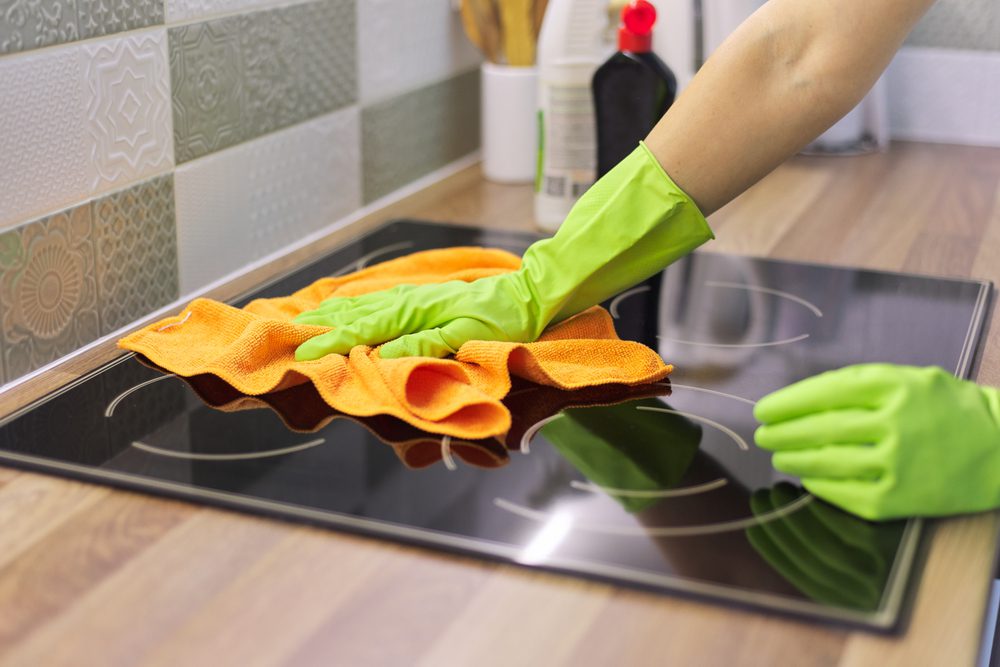Embracing the Cleaning Revolution
Cleaning is an essential part of our daily lives, ensuring our surroundings are hygienic and presentable. Over the years, various cleaning tools and techniques have been developed, but none have revolutionized the industry quite like microfiber. In this article, we will delve into the fascinating world of microfiber, exploring its science, benefits, and applications. Whether you’re a cleaning enthusiast or simply looking to enhance your cleaning routine, understanding the magic of microfiber will undoubtedly empower you to achieve pristine cleanliness with ease.
Understanding Microfiber: The Science Behind Its Superiority
What is Microfiber?
Microfiber is a synthetic material composed of extremely fine fibers, typically smaller than a human hair. These fibers are densely packed together, creating a fabric with exceptional cleaning abilities. Unlike traditional cleaning materials like cotton, microfiber has a unique structure that enables it to trap and remove dirt, dust, and bacteria more effectively.
The Composition of Microfiber
Microfiber is primarily made from a blend of polyester and polyamide (nylon) fibers. This combination provides the fabric with durability, absorbency, and electrostatic properties. The polyester fibers add strength and enhance the cloth’s ability to withstand repeated use and washing, while the polyamide fibers contribute to its softness and absorbency.
The Structure of Microfiber
The structure of microfiber is what sets it apart from conventional cleaning materials. Each microfiber cloth is composed of thousands of tiny wedge-shaped filaments. These filaments have a larger surface area compared to traditional fibers, allowing them to capture and hold onto dirt, dust, and moisture more efficiently. Additionally, the wedge-shaped fibers create a capillary action that lifts and traps particles within the cloth.
How Microfiber Cleans
When a microfiber cloth comes into contact with a surface, the numerous fibers act like tiny hooks, attracting and holding onto dirt and grime. The fabric’s static charge further enhances this effect, ensuring particles are effectively removed rather than being spread around. The superior cleaning power of microfiber lies in its ability to lift and lock away even the smallest particles, leaving surfaces remarkably clean and streak-free.
Harnessing the Benefits: Proper Usage and Care of Microfiber
Choosing the Right Microfiber Cloth
To maximize the benefits of microfiber, it’s crucial to select the right cloth for the task at hand. Microfiber cloths come in various sizes, densities, and textures, each designed for specific cleaning purposes. For general cleaning and dusting, a medium-density cloth with a smooth texture is ideal. When dealing with tougher stains or heavily soiled surfaces, opt for a higher-density cloth with a slightly abrasive texture. Remember to have a collection of microfiber cloths for different areas to avoid cross-contamination.
Using Microfiber for Different Surfaces
One of the remarkable qualities of microfiber is its versatility across different surfaces. Whether you’re cleaning glass, countertops, stainless steel appliances, or even delicate electronics, microfiber cloths can safely and effectively tackle the task. When cleaning delicate surfaces like screens or eyeglasses, ensure you’re using a soft, lint-free microfiber cloth to prevent scratching. For surfaces prone to streaks, lightly dampen the cloth with water or a mild cleaning solution.
Proper Cleaning Techniques
To harness the full potential of microfiber, proper cleaning techniques are essential. Start by removing loose dirt and dust with a dry microfiber cloth. For tougher stains, dampen the cloth with water or a suitable cleaning solution. Avoid using excessive amounts of water, as microfiber is highly absorbent and requires minimal moisture to perform optimally. Gently scrub the surface using circular motions, allowing the microfiber to lift and trap the dirt. Rinse or replace the cloth as needed during the cleaning process.
Maintaining and Washing Microfiber
To ensure the longevity of your microfiber cloths, it’s vital to follow proper care instructions. After each use, rinse the cloth under warm water to remove any debris. If heavily soiled, wash the cloth with mild detergent in warm water. Avoid using bleach, fabric softeners, or dryer sheets, as they can diminish the cloth’s effectiveness. Air-dry the cloths or tumble dry on low heat without dryer sheets. It’s best to wash microfiber cloths separately from other fabrics to prevent lint transfer.
The Versatility of Microfiber: Applications in Various Settings
Microfiber’s superior cleaning capabilities make it an indispensable tool in various settings. Let’s explore its applications beyond the household:
Microfiber for Household Cleaning
Microfiber cloths excel in household cleaning tasks, from wiping countertops and kitchen surfaces to dusting furniture and appliances. Their ability to capture and hold onto particles makes them highly efficient in reducing allergens and promoting a healthier living environment. With microfiber, you can achieve a sparkling clean home with ease and without the need for harsh chemicals.
Microfiber in Automotive Care
When it comes to caring for your vehicle, microfiber cloths are a game-changer. Their soft and gentle fibers make them ideal for cleaning delicate surfaces like car interiors, windows, and even the exterior paint. Microfiber cloths can effortlessly remove dust, fingerprints, and smudges, leaving your vehicle looking showroom-ready. Additionally, their lint-free properties ensure a streak-free finish.
Microfiber for Electronic Devices
Cleaning electronic devices such as smartphones, tablets, and computer screens requires utmost care. Microfiber cloths offer a safe and effective solution, as they are non-abrasive and leave no residue. The fine fibers of microfiber can delicately remove fingerprints and smudges without scratching sensitive screens or damaging the delicate components of your devices.
Microfiber in Healthcare
In healthcare settings, maintaining cleanliness and hygiene is of paramount importance. Microfiber cleaning cloths play a vital role in infection prevention and maintaining a sterile environment. Microfiber’s ability to effectively trap and remove bacteria and viruses makes it an invaluable tool in hospitals, clinics, and other healthcare facilities. From wiping down surfaces to sanitizing medical equipment, microfiber cloths provide an efficient and hygienic solution, contributing to the overall safety and well-being of patients and healthcare professionals.
The Future of Cleaning Lies in Microfiber
In conclusion, microfiber is a cleaning marvel that has revolutionized the way we clean. Its unique composition, structure, and cleaning abilities make it far superior to traditional cleaning materials. With microfiber, you can achieve sparkling cleanliness, effortlessly removing dirt, dust, and even microscopic particles from various surfaces.
By understanding the science behind microfiber and adopting proper usage and care techniques, you can harness its full potential. Whether you’re a cleaning enthusiast, a professional cleaner, or simply someone looking to enhance their cleaning routine, microfiber will undoubtedly become your go-to cleaning tool.
The versatility of microfiber extends beyond the household, finding applications in automotive care, electronics cleaning, and healthcare settings. Its gentle yet effective cleaning power makes it a trusted companion in these diverse environments.
As we move forward, embracing the magic of microfiber is a step towards a cleaner, healthier, and more sustainable future. Say goodbye to harsh chemicals and disposable wipes, and unlock the cleaning power of tiny fibers with microfiber.





